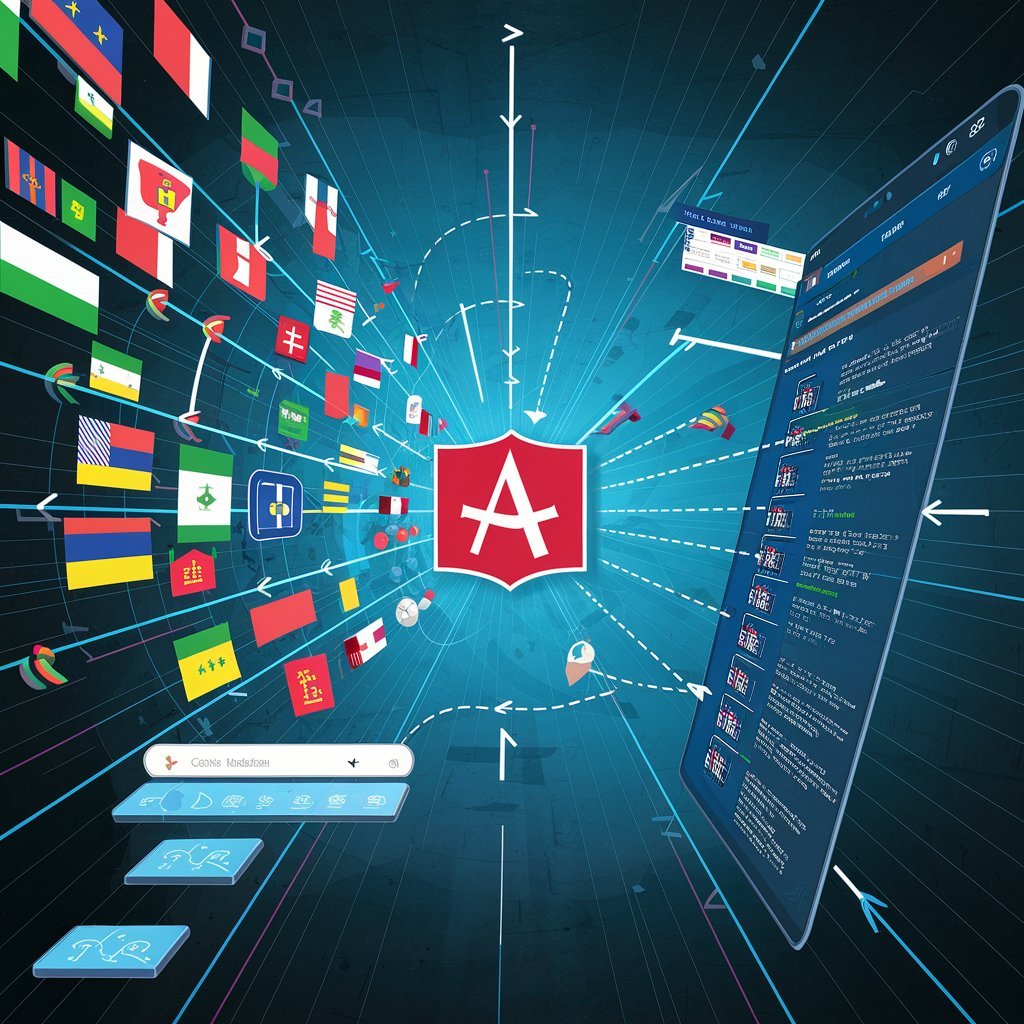Introduction:
As the global reach of web applications expands, catering to users from diverse linguistic and cultural backgrounds becomes essential. Internationalization (i18n) is the process of designing and developing applications to support multiple languages and locales. In Angular, i18n features empower developers to create applications that can be easily translated into different languages and adapted to various regional preferences. In this article, we’ll explore the fundamentals of internationalization in Angular applications, including how to set up i18n, manage translations, and handle locale-specific content.
Understanding Internationalization (i18n) in Angular:
Internationalization involves adapting software to different languages, regions, and cultures without modifying the codebase significantly. Angular provides robust support for i18n through its built-in features and tools. The key concepts of internationalization in Angular include:
- Localization: Localization is the process of adapting an application to a specific locale or language. This includes translating text, formatting dates, times, numbers, and currencies, and adjusting cultural conventions such as sorting order and measurement units.
- Translation: Translation involves converting text strings and content in the application from one language to another. Angular’s i18n features enable developers to mark translatable text in templates and extract them into translation files for localization.
- Locale: A locale represents a specific cultural or linguistic region. It includes information such as language, country, script, and variant. Angular allows developers to specify locale settings at runtime to customize the behavior of the application based on user preferences.
Setting Up Internationalization in Angular:
To enable internationalization in an Angular application, follow these steps:
- Enable i18n in Angular CLI: Initialize a new Angular project with i18n support using the Angular CLI command:
ng new my-app --i18n
2. Mark Translatable Text: Identify text strings in your application templates that need to be translated and mark them with the i18n attribute:
<h1 i18n="Welcome header|An introduction header for the application">Welcome to my App!</h1>
3. Extract Translations: Extract translatable text from the templates into translation files using the Angular CLI command:
ng xi18n
- Translate Text: Translate the extracted text into different languages and locales using translation files (
.xlfor.xliffformat) generated by the Angular CLI. - Configure Locale Settings: Configure locale settings in the application to adjust date, time, number formatting, and other locale-specific behaviors based on user preferences.
Managing Translations and Locale Settings:
Angular provides several approaches for managing translations and locale settings in applications:
- Translation Files: Use
.xlfor.xlifffiles generated by the Angular CLI to manage translations for different languages. These files contain translatable text strings and their translations, organized by language and locale. - Angular Localization: Utilize Angular’s built-in localization features, such as the
LOCALE_IDtoken and theDatePipe,CurrencyPipe, andDecimalPipepipes, to format locale-specific data in templates and components. - External Translation Services: Integrate with external translation services or tools, such as Google Translate or Crowdin, to automate the translation process and manage multilingual content more efficiently.
Handling Locale-Specific Content:
In addition to translating text strings, Angular applications may need to adapt content, layouts, and functionality based on the user’s locale. Consider the following approaches for handling locale-specific content:
- Conditional Rendering: Use Angular’s
*ngIfand*ngSwitchdirectives to conditionally render content based on the current locale or language preferences. - Dynamic Components: Create dynamic components or templates that can be customized based on the user’s locale, such as date pickers, calendars, or language switchers.
- Locale Routing: Implement routing strategies to serve different versions of the application based on the user’s locale, allowing users to access content tailored to their language and region.
Conclusion:
Internationalization (i18n) is a critical aspect of building modern web applications, especially those targeting global audiences. Angular’s comprehensive support for i18n empowers developers to create multilingual and culturally adaptable applications with ease. By following best practices for setting up i18n, managing translations, and handling locale-specific content, Angular developers can deliver seamless and personalized experiences to users worldwide, regardless of their language or cultural preferences. As the demand for multilingual applications continues to grow, mastering internationalization techniques in Angular will be essential for building inclusive, accessible, and globally competitive applications.





